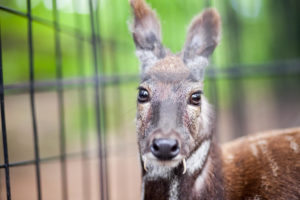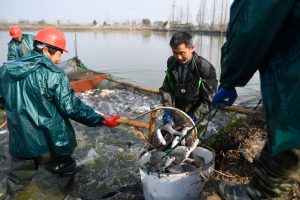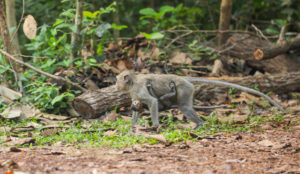A global wildlife summit has concluded with a suite of new protections for South Asian species, with decisions made to either ban or regulate international trade. Held in Panama City from 14-25 November, the 19th Conference of Parties to the Convention on International Trade in Endangered Species of Wild Fauna and Flora, or CITES CoP19, saw signatory governments convene in Latin America for the first time in 20 years.
Key decisions included a massive expansion of the number of shark species subject to global regulation, meaning the majority of the international trade in shark fins will be regulated for the first time; the first new CITES protections for songbirds in 20 years; and a slew of new controls on trade in reptiles and amphibians which are sold as pets.
CITES – the Convention on International Trade in Endangered Species of Wild Fauna and Flora – is a global agreement first signed in 1975, which now has 183 signatory countries, plus the EU. CITES aims to ensure that international trade does not drive wild animals and plants to extinction, by regulating or prohibiting trade in species included on its appendices.
Appendix I is meant for the most threatened wild animals and plants, and international trade in these species is generally prohibited. Appendix II is intended for species which might become threatened by trade if it is not regulated; commercial trade in these species is allowed if the exporting country issues a permit which confirms the specimens were harvested both legally and sustainably.
New protections for songbirds
At CITES CoP19, the world’s governments agreed to more stringent regulation of international trade in two songbirds from South and Southeast Asia. The white-rumped shama, which is found from Southern India to Indonesia, was added to Appendix II, meaning international trade will be regulated. The straw-headed bulbul, which clings on in scattered populations in Southeast Asia, was moved from Appendix II to Appendix I, banning international commercial trade.
Both species are in demand for the cage bird trade, particularly in Indonesia. This trade has driven the straw-headed bulbul – noted for its pleasing song – to the brink of extinction, and has decimated some populations of the white-rumped shama.

Dr Farrah Shameen Mohamad Ashray, head of the Malaysian delegation to CITES CoP19 who were co-proponents of both proposals, told The Third Pole: “There’s a huge bird trade in the region, and it’s now affecting Malaysia’s birds. Seizures [of smuggled birds] are happening weekly, and that’s only what we see. This listing is a first step to controlling that trade. Data shows that the white-rumped shama has been found in bird markets in Europe. That means the threat of its trade is imminent, and it’s beyond Southeast Asia and its range states.”
Indian reptiles under threat
India submitted three proposals to CITES CoP19 for stricter protections for its native reptiles: the Jeypore Indian gecko, red-crowned roofed turtle and Leith’s softshell turtle. All three species survive nowhere else on Earth. India’s proposals to add the gecko to Appendix II – meaning international trade will require permits – and to move both turtles from Appendix II to Appendix I – banning international trade – were adopted by consensus at CITES CoP19. The Jeypore Indian gecko lives only in a few locations in the Eastern Ghats and is endangered, but has been seen for sale as an exotic pet on social media. Both turtle species are critically endangered, and are illegally traded internationally as pets, food and traditional medicine.
“These decisions should help to protect the species from extinction, but CITES is only one of the tools which needs to be use in complement with other measures to address the threats facing these species,” Avinash Basker, environmental lawyer, told The Third Pole. “For example, the central government has proposed enhanced legal protection for the Leith’s softshell turtle and Jeypore Indian gecko in India’s wildlife legislation. Population monitoring for the red-crowned roofed turtle also appears to be underway,” he added.
India’s proposals were among a total of 12 brought to CITES CoP19 for greater protection of freshwater turtles. Calling for support of all turtle proposals during the debate, Sue Lieberman, vice president of international policy at the Wildlife Conservation Society, highlighted that turtles are among the world’s most threatened vertebrate groups. “Targeted unsustainable and illegal exploitation for trade is the single most powerful factor that is driving species and populations towards extinction,” said Lieberman. “Abating such a threat is the very reason that CITES exists.” Ultimately, all 12 turtle proposals were adopted at CoP19.
Decisions to ‘transform’ regulation of shark fin trade
Among the most notable outcomes from CITES CoP19 were the decisions to add three families of sharks and rays to Appendix II, meaning international trade in these species will be regulated for the first time.
Panama, alongside Bangladesh, Maldives, Sri Lanka and 37 other countries, led a proposal to include all 56 species of requiem sharks (the family Carcharhinidae) on Appendix II. The proposal highlighted that 68% of species in the family – which includes such well-known species as the blue shark and reef sharks – are threatened with extinction, and that requiem sharks represent up to 85.5% of the global shark fin trade. The proposal focused on 12 particularly threatened species, and argued that as shark fins and meat are very difficult to identify, trade in the whole family needs to be regulated for these species to be effectively protected.
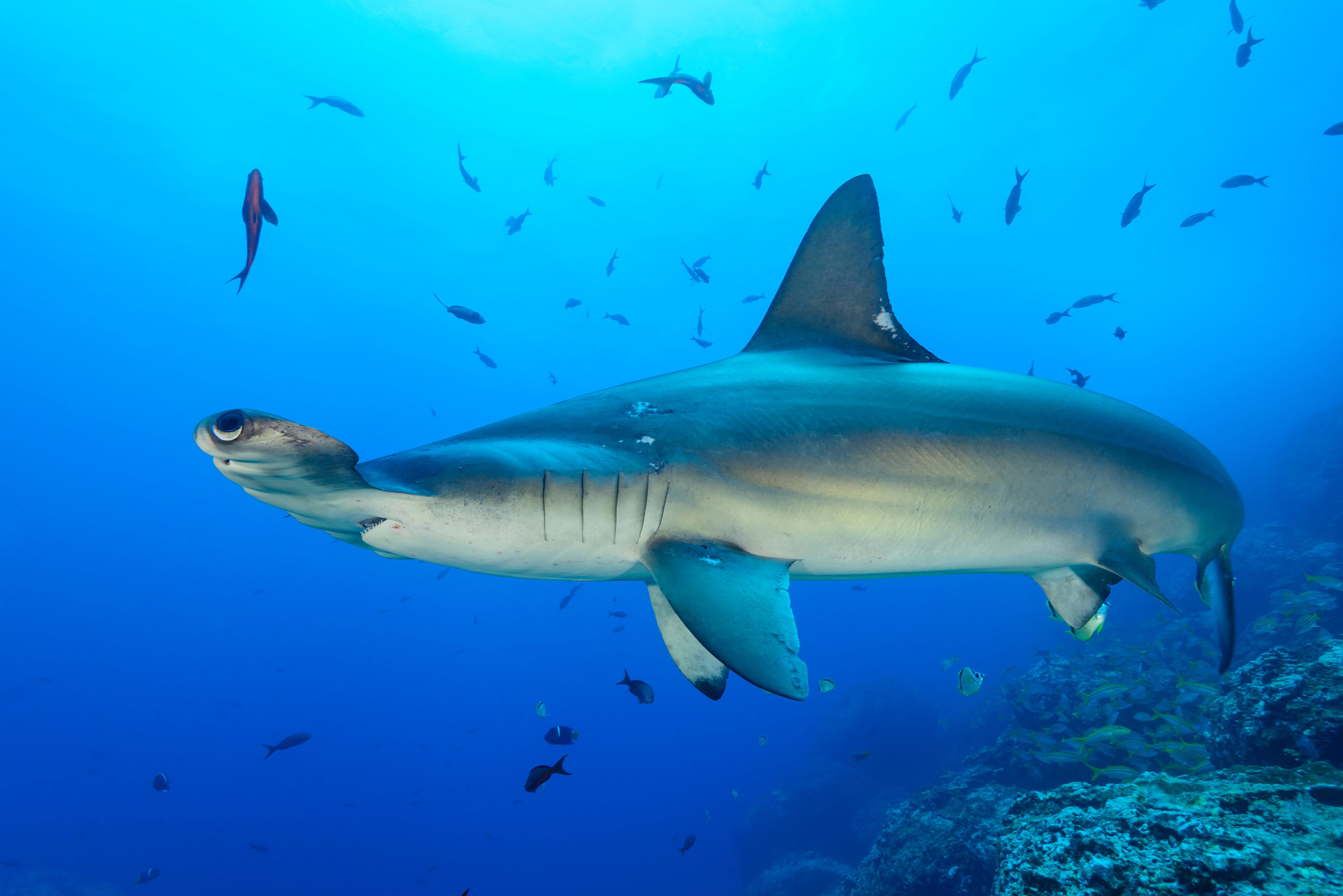
Despite opposition from Japan and several other countries, and a suggestion from Peru to exclude the blue shark, the parties gathered in Panama voted to regulate trade in all requiem sharks. Also adopted by vote were proposals to include hammerhead shark family – which are also traded for their fins – and guitarfishes to Appendix II. The majority of species in both these families are considered endangered.
“We are extremely happy because the world has woken up to conservation of sharks, the top predators that maintain equilibrium of the ecosystems which our coastal communities need,” said Shirley Binder, a senior adviser to Panama’s Ministry of Environment and chair of the CoP19 plenary, who introduced the requiem shark proposal at the meeting.
Stan Shea, marine programme director at the Bloom Association Hong Kong, an NGO, told The Third Pole: “This CoP has helped marine conservation move a step forward, not only with listings but with new implementation tools. Now with more species being listed on CITES, we can get species-specific data on how much is being traded, so researchers can understand more about the trade. The next step is thinking how we will implement and enforce [the listing] properly, making sure the trade is legal and sustainable.”
Unsuccessful proposals at CITES CoP19
Not all proposals brought to CITES CoP19 were adopted. India and Nepal proposed to delete the North Indian rosewood (Dalbergia sissoo) from Appendix II, meaning products made from its wood could be traded internationally without permits. The South Asian tree species is not threatened, but was included on Appendix II in 2016 along with the whole Dalbergia genus, when CITES Parties decided that given the difficulty of distinguishing between species of rosewood, trade in all species needed to regulated to ensure effective protection for those that are threatened by overharvesting.

In Panama, India argued that CITES controls for North Indian rosewood are not necessary, citing tools that can be used to distinguish between species, and said the restriction is having a negative impact on people who rely on rosewood handicrafts for their livelihoods. But the EU and Canada, among others, said that these identification techniques are not available to enforcement officials in practice. In the end, CITES Parties determined that the reasons for the restrictions still stand, and voted against adopting India’s proposal.
Another unsuccessful proposal was brought by Thailand, to move its population of Siamese crocodiles from Appendix I to Appendix II. Thailand argued that trade is not a threat to its wild crocodiles, but parties voted against the proposal, after several noted that the wild population remains very small, and so still meets criteria for inclusion on Appendix I.
Call to ban use of pangolin scales
All pangolin species have been listed on CITES Appendix I since 2016, meaning all international commercial trade in the species or their body parts is banned. Pangolins – the world’s only scaled mammals – are killed for both their meat and scales, which are used in traditional Chinese medicine.
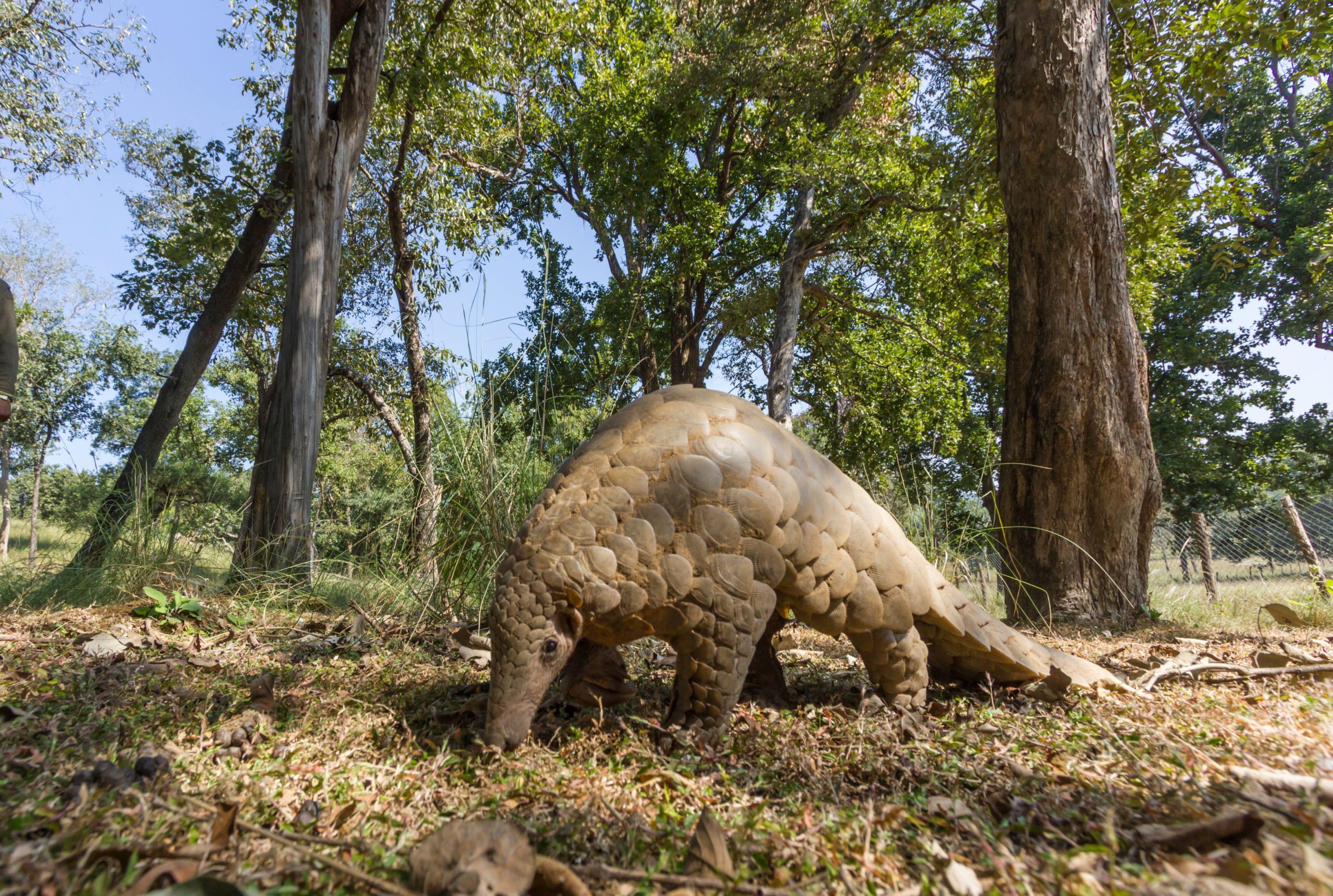
In China, pangolin scales can still be legally used in production of traditional medicine. Concerned that around 600,000 pangolins may have been illegally traded between 2016 and 2019 alone, and that demand reduction efforts “are not proving effective”, the United Kingdom came to CoP19 with a proposal to add language to the CITES resolution on pangolins, calling on countries to close domestic markets if they contribute to poaching or illegal trade.
China opposed this language, saying that domestic matters are outside the scope of CITES, but the language was eventually adopted by vote.
“CITES Parties have previously agreed to such recommendations concerning domestic trade for ivory, Asian big cats and Tibetan antelopes,” noted Avinash Basker. “I think this indicates special cases where the parties feel merely controlling international trade is not sufficient to achieve the goal of preventing species extinction. Since the recommendation is conditional on the domestic market contributing to poaching or illegal trade, it is linked to the Convention’s mandate,” he argued.
CITES listing criteria: how to decide which species to protect?
Many debates at CITES CoP19 were on issues that affect the Convention overall, rather than specific species. One such debate focused on the criteria used to decide which species should be included in CITES appendices.
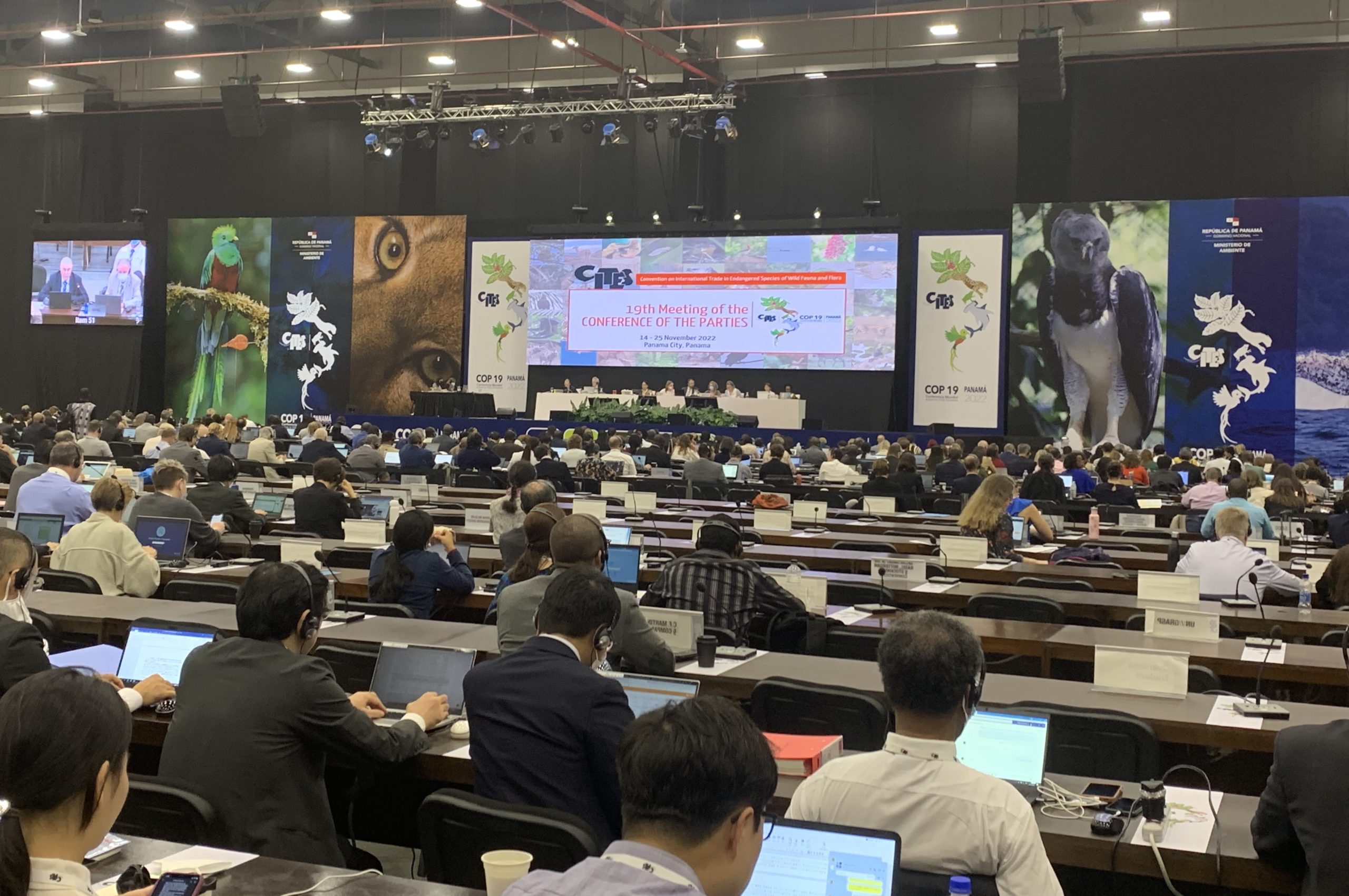
One controversial proposal submitted by Botswana, Cambodia, Eswatini, Namibia and Zimbabwe sought to change these criteria, to require that international trade be the primary driver of a species’ decline for it to qualify for inclusion on CITES appendices, and to add criteria relating to the potential impacts on livelihoods and food security of a CITES listing. In effect, these changes could significantly reduce the number of species that meet criteria for CITES protections.
Many parties spoke up against the proposal, saying it would be contrary to the fundamental principles of the convention, the original text of which says Appendix I shall apply to all threatened species which “are or may be affected by trade”, and that Appendix II shall include all species that could become threatened by unregulated trade. Ultimately, the proposal was rejected by a vote; China, India, Nepal, Bangladesh and Bhutan all voted for its adoption.





